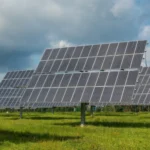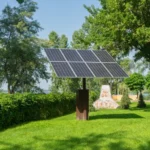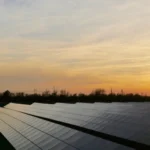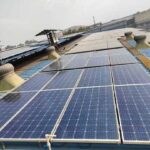How Are Solar PV Modules Made? Complete Guide to the Manufacturing Process
How Are Solar PV Modules Made? Complete Guide to the Manufacturing Process
To make a Solar PV Module, solar cells are joined physically and electrically.
Components of Solar PV Module:
- Glass
- Encapsulant
- Module frame
- Interconnectors
Steps for fabrication of Solar PV Modules:
- Cell sorting
- Contact Soldering
- Series interconnection of cells
- Preparing lamination assembly
- Laminate curing and polymerization
- Module framing & external connections
- Module I-V characterization
The first step is of sorting the solar cells (solar cells are tested and cells from same group are sorted). After sorting of cells, metal contacts are soldered in the form of metal strips, on the front side of the cells. The process of making metal contacts is known as tabbing. After this, cells are connected in series, this process is called stringing.
The above mentioned process can be done both manually and by automated technology. After stringing, stack of connected cells, glass, laminates and tedlar is prepared. After this process, the stack is kept in a machine called laminator. This process is called lamination. After the process of lamination, curing is done, where module is heated. During curing process, the polymerization of EVA occurs (formation of crosslink of chemical bonds). This process of polymerization makes the EVA sheet compact and provides strength and durability for long term. After this process modules are farmed using aluminum frames.
A plastic box containing electrical points for external electrical connection is added at the rear side of module which is called junction box. This junction box also contains bypass diodes. At the end, modules are characterized for their IV curve and power output.
Suggested Articles

Agrovoltaics Innovation: Boosting Solar Energy While Supporting Farming
Explore agrovoltaics innovation: how combining solar energy with farming boosts efficiency, supports agriculture, and maximizes land use.

Higher Electricity Bills in Haryana as Fuel Surcharge Rises
Haryana consumers are facing higher electricity bills after the Haryana Electricity Regulatory Commission (HERC) approved a fuel surcharge hike for DHBVN and UHBVN areas. The increase reflects rising fuel and power purchase costs, directly impacting domestic, commercial, and industrial users across the state.

Solar Power Park Scheme: Central Government Expands Clean Energy Initiative
The Union government plans to launch the second phase of a dedicated program to develop solar parks across the country that will aim to plug loopholes and overcome slow progress.

1 MW Solar Plant Cost in Haryana | A Complete Guide
Planning a 1 MW solar power plant in Haryana? This guide covers complete 2025 cost details, subsidy schemes, ROI, and savings potential for industrial users.

How to Clean and Maintain Solar Power System for Maximum Efficiency
Regular cleaning of your solar power system is essential to maintain maximum efficiency and energy output. Dust, bird droppings, and pollution can reduce performance by up to 20%. This blog explains the right cleaning methods, schedules, and safety tips for residential, industrial, and commercial solar systems.

Solar Rooftop Projects: Benefits of Intentional Islanding for Power Backup
Discover the role of intentional islanding in solar rooftop projects. Ensure continuous power supply, system safety, and reliable energy even during grid failures.

SECI Sets Record in Renewable Energy Trading, Surpasses ₹100 Billion
SECI achieves record renewable power trading revenue surpassing ₹100 billion, marking a milestone in India’s clean energy growth and solar market expansion.

Solar Projects Challenges in India: Module Supply Shortages and Policy Delays Slow Growth
India’s utility-scale solar projects face delays due to module supply shortages and policy challenges, impacting the growth of renewable energy.